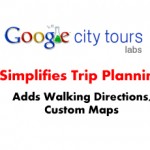 Mountain View, California — Google Analytics is one of the most robust offerings by the search giant and with its recent release of Google Analytics new features, it has almost become ubiquitous for a large number of companies reaping benefits from it. The Mountain View, Calif., company has just rolled out another set of pretty impressive new features. It includes “Annotations,” a tremendously useful new feature both to analysts as well as executives, who are usually not up to date on granular details about website activity.
Mountain View, California — Google Analytics is one of the most robust offerings by the search giant and with its recent release of Google Analytics new features, it has almost become ubiquitous for a large number of companies reaping benefits from it. The Mountain View, Calif., company has just rolled out another set of pretty impressive new features. It includes “Annotations,” a tremendously useful new feature both to analysts as well as executives, who are usually not up to date on granular details about website activity.
Here is an example of what can be done with the annotation feature:

This is a great feature which will end up saving many people a lot of time. The concept here is that there can be real collaboration between those who put together campaigns and those who see the analytics without that important data. Rather than going through old emails to analyze the traffic surge, or shopping cart conversion increased, users can bookmark this event when it happens for future reference. This will sure make end of month reporting a lot quicker!
An easy annotation that outlines a “cause and effect” for the data consumer can save a lot of time and trouble. Here is an example of how this will look:
The latest annotations feature, comparatively is highly dynamic. As defined on the Google Analytics blog:

Annotations complements existing anomaly detection by capturing the tribal intelligence of your company, which tends to be the most expensive and easily lost resource of all. A simple note from a colleague can save hours of real work (and frustration) for an analyst who is tasked to explain a usually dry set of numbers. This short video will show you how to use Annotations.
Another great advantageous thing is that different members within your company can instantly see the results of other teams’ actions. In other words, annotations can be created by anyone involved with the production and promotion of a website for everyone else to see. A few examples:
This should help encourage teamwork, as everyone involved will be able to grasp the whole picture and coordinate activities with other teams’ activities. Google has started rolling out this feature and has indicated it should be live for all users mid January!
Here is to 2010 — Fantastic holiday gifts from the Google Analytics team!


